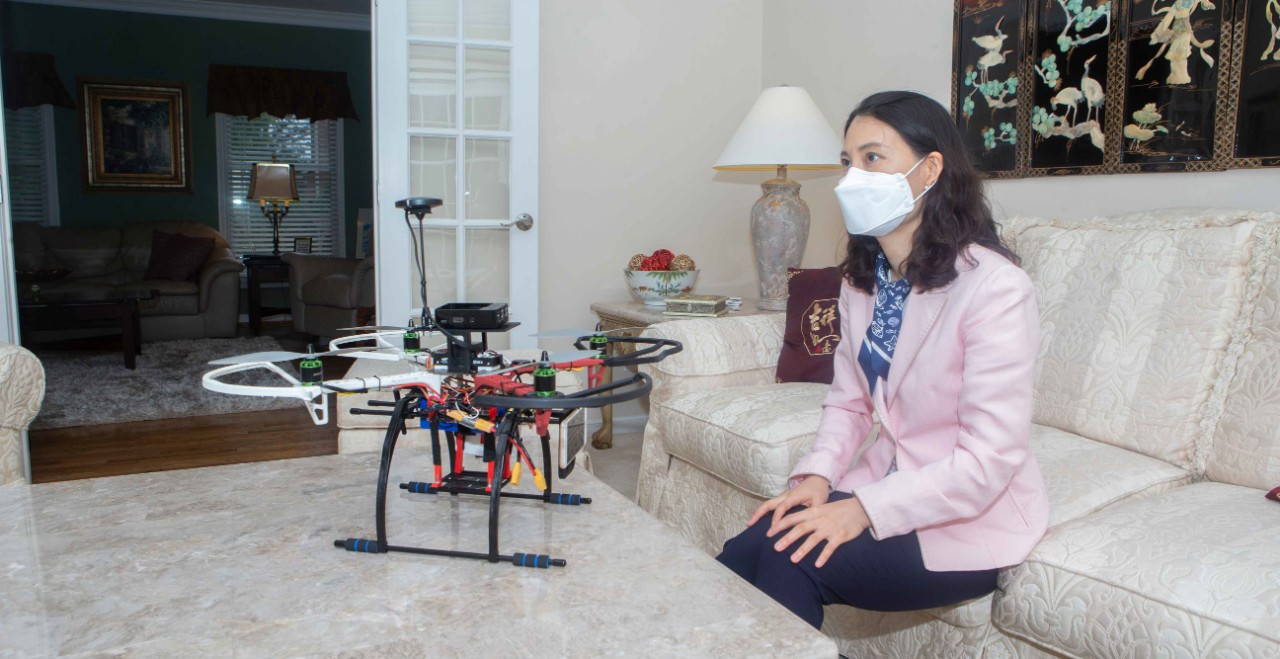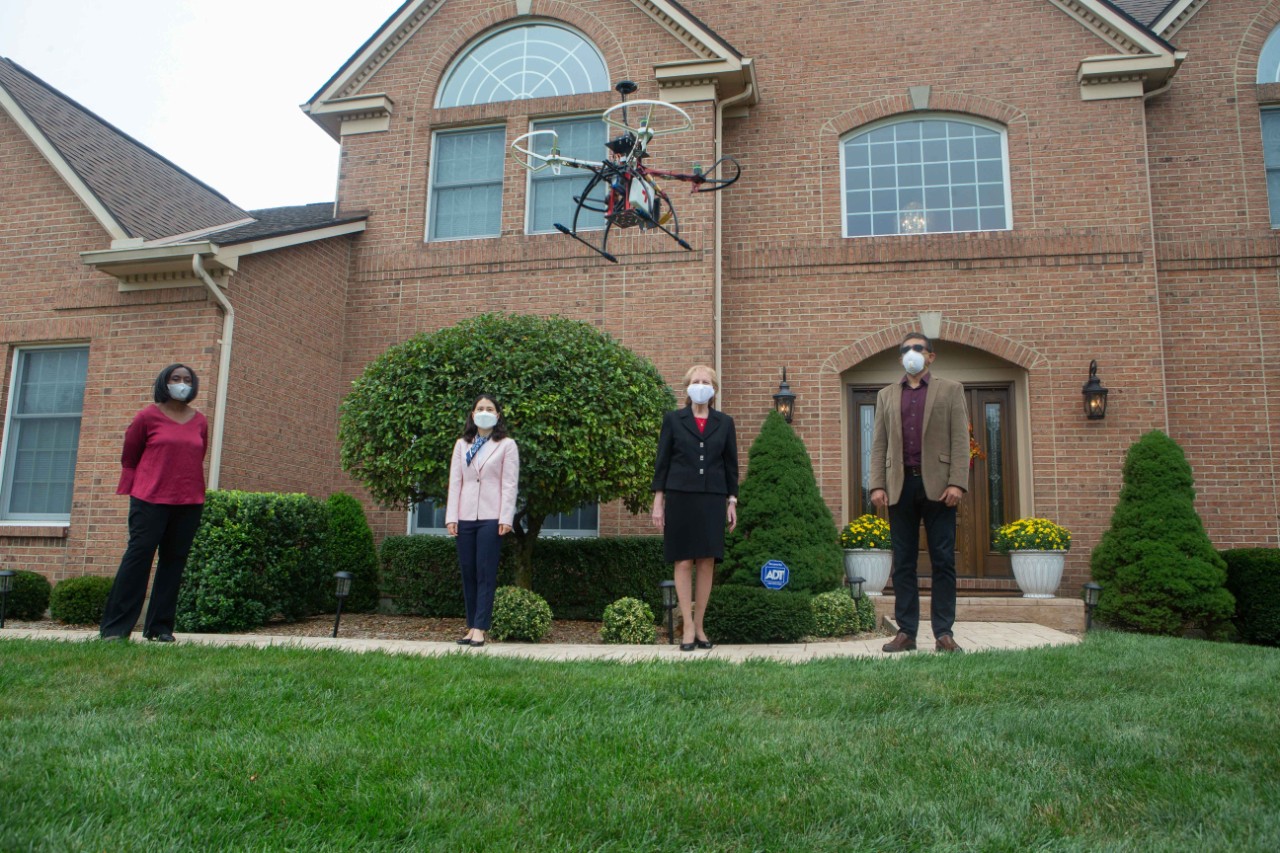
Forbes: Telehealth drones bring health care to you
UC drone project expands technology for telehealth
Forbes highlighted the work of four inventors at the University of Cincinnati who are exploring new technology in telehealth.
Inventors Victoria Wangia-Anderson, Manish Kumar, Seung-Yeon Lee and Debi Sampsel from three colleges at UC collaborated to develop a semi-autonomous drone that can be dispatched right to people’s homes. The drones are big enough to carry medicine or medical supplies but small enough to maneuver the tight confines of a home using navigational algorithms developed by UC engineers.
Still in development, the drone has cameras and a display screen so patients can talk to health care professionals from the comfort of their home. The prototype carries a waterproof box the size of a small first-aid kit to deliver medical supplies or collect self-administered lab tests.
"These multiple functions — the ability to deliver medical supplies, collect tests, and integrate display screens for telehealth, in addition to better tools to empower autonomous navigation inside households, if executed well, may potentially serve as a relatively novel and improved solution for telehealth," Forbes contributor Sai Balasubramanian wrote.
The researchers in UC’s College of Nursing, College of Allied Health Sciences and College of Engineering and Applied Science secured a UC Office of Research grant to develop a prototype to test the feasibility of dispatching a telehealth care delivery drone to a patient's home to provide health assessments or medical interventions.
The researchers also talked to MedCity News about the promise of telehealth drones. The global COVID-19 pandemic demonstrated the benefits and demand for telehealth services. But it also exposed a digital divide that is leaving some people behind. Not everyone has easy access to digital devices or the ability to use them comfortably.
“That’s one of the things that’s invaluable when you are looking at the fact that not everybody has the wherewithal or dexterity to download apps and create that two-way communication with a device,” Sampsel told MedCity News.
Featured image at top: Seung-Yeon Lee, an associate professor of nutrition sciences in UC's College of Allied Health Sciences, sits across from a telehealth drone that allows patients to talk face-to-face to health care professionals from the comfort of their home. Photo/Joseph Fuqua II/UC Creative + Brand
More UC telehealth in the news
MedCity News: Drone in your home? Telehealth makeover underway at University of Cincinnati
Drone DJ: Drone to deliver telehealth devices to households
Healthcare IT News: Cincinnati researchers invent new telehealth drone
mHealth Intelligence: Researchers work on a drone that can make telehealth house calls
Health Leaders: Telehealth drone homes to improve care access

Three colleges at the University of Cincinnati partnered on a project to develop a telehealth drone that health professionals can send to a patient's home. Pictured from left are Professor Victoria Wangia-Anderson and Associate Professor Seung-Yeon Lee from the UC College of Allied Health Sciences, Director of Telehealth Debi Sampsel from the UC College of Nursing and Professor Manish Kumar from the UC College of Engineering and Applied Science. Photo/Joseph Fuqua/UC Creative + Brand
Related Stories
Engineers develop stress test to measure cortisol
May 12, 2025
Yahoo! Finance highlights research into home tests that can diagnose stress and cardiac issues.
Ladies of Anavlochos: Tech sheds light on ancient Greek figurines
May 12, 2025
The Greek Reporter and other news outlets highlighted work by the University of Cincinnati's Department of Classics using experimental archaeology to explore rites behind Bronze Age figurines discovered at Anavlochos, Crete.
The latest efforts in cervical cancer prevention
May 12, 2025
Medical Laboratory Observer interviewed the University of Cincinnati Cancer Center's Leeya Pinder to discuss the current state and future of cervical cancer prevention.
